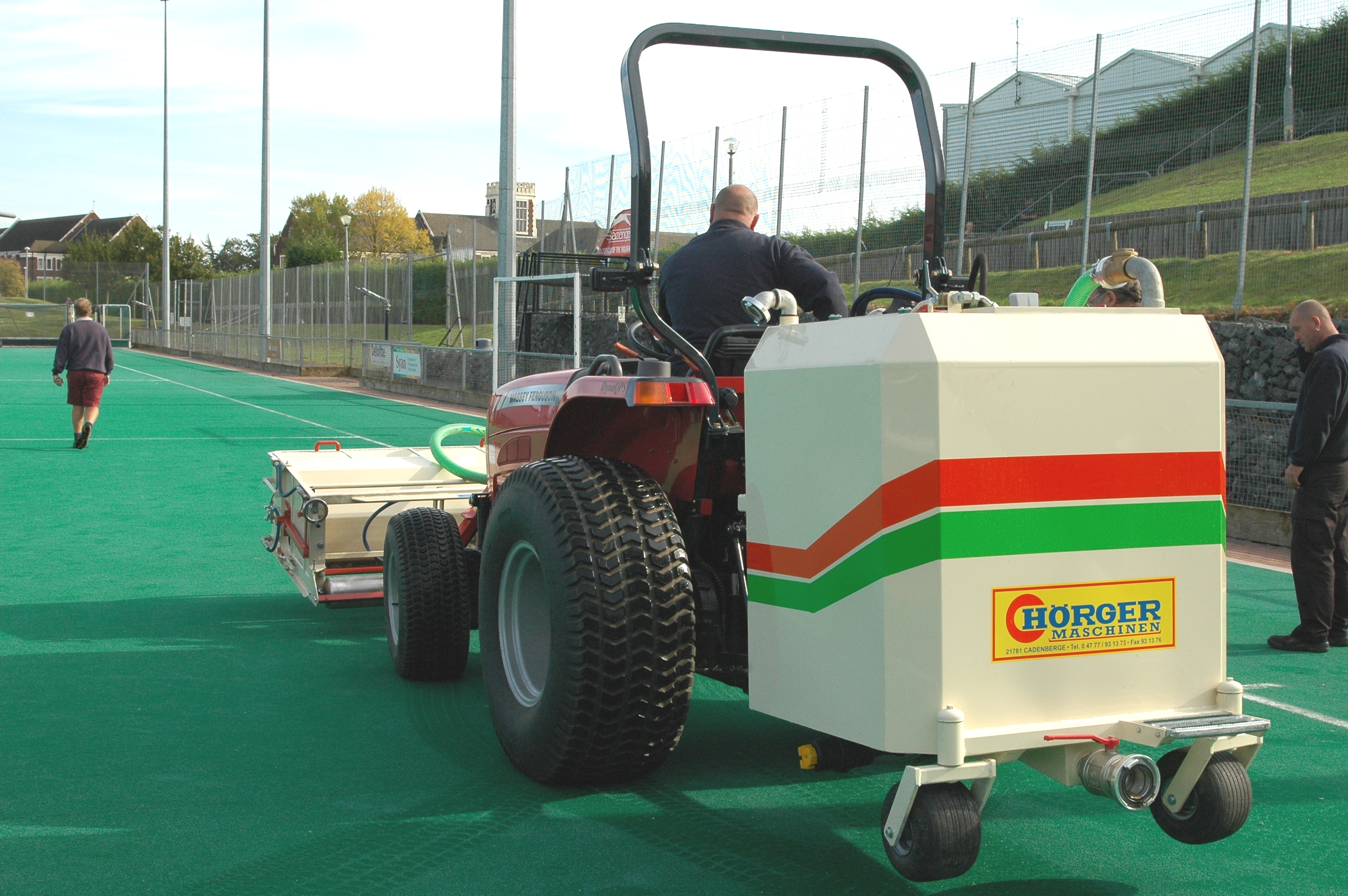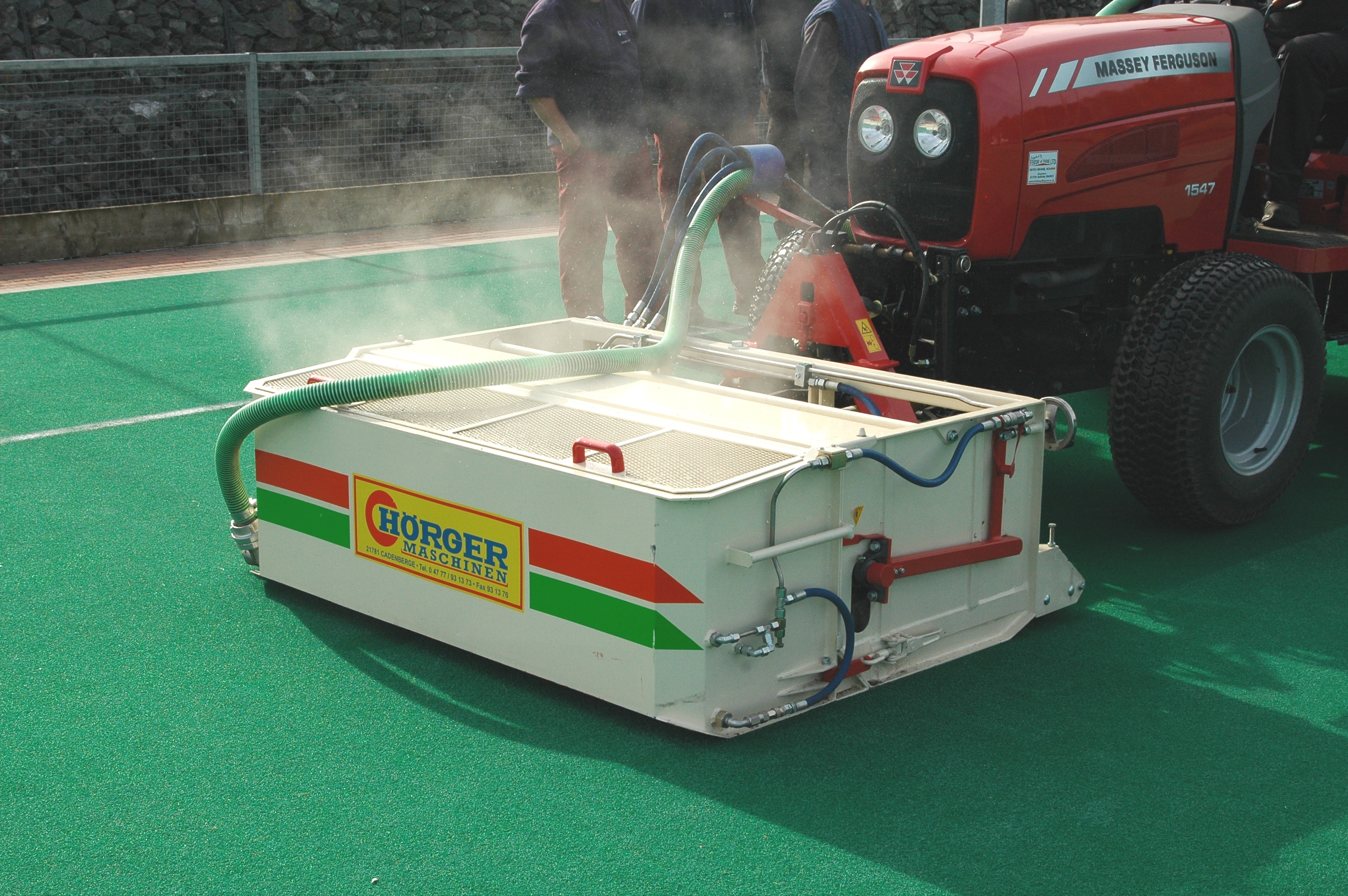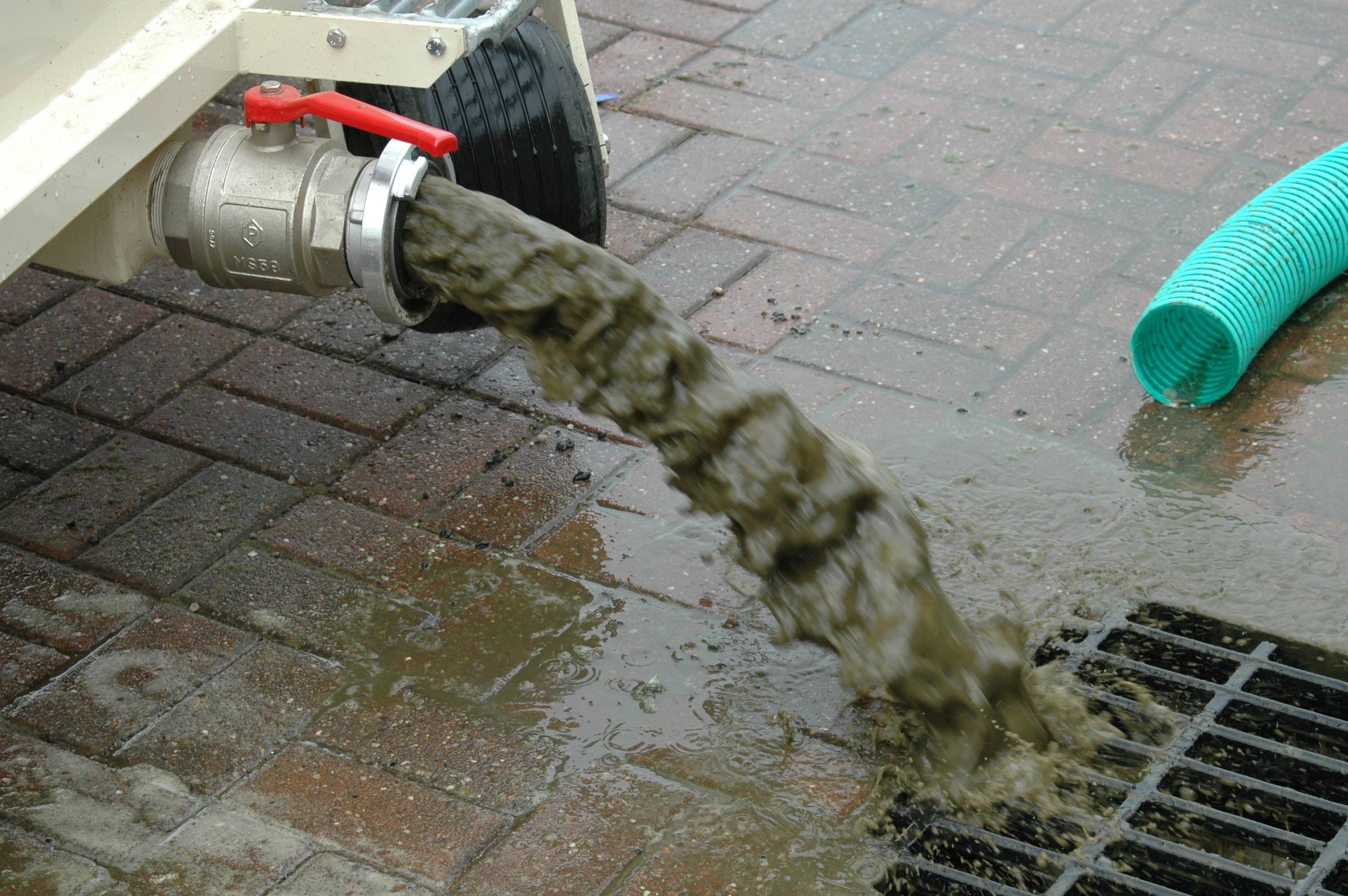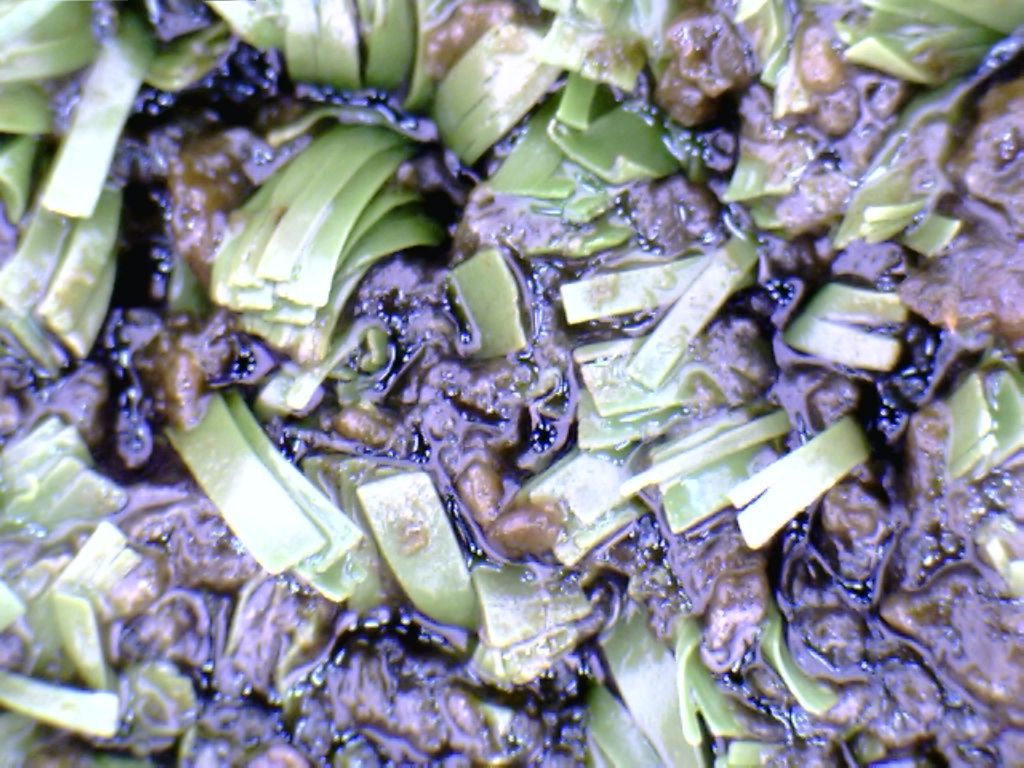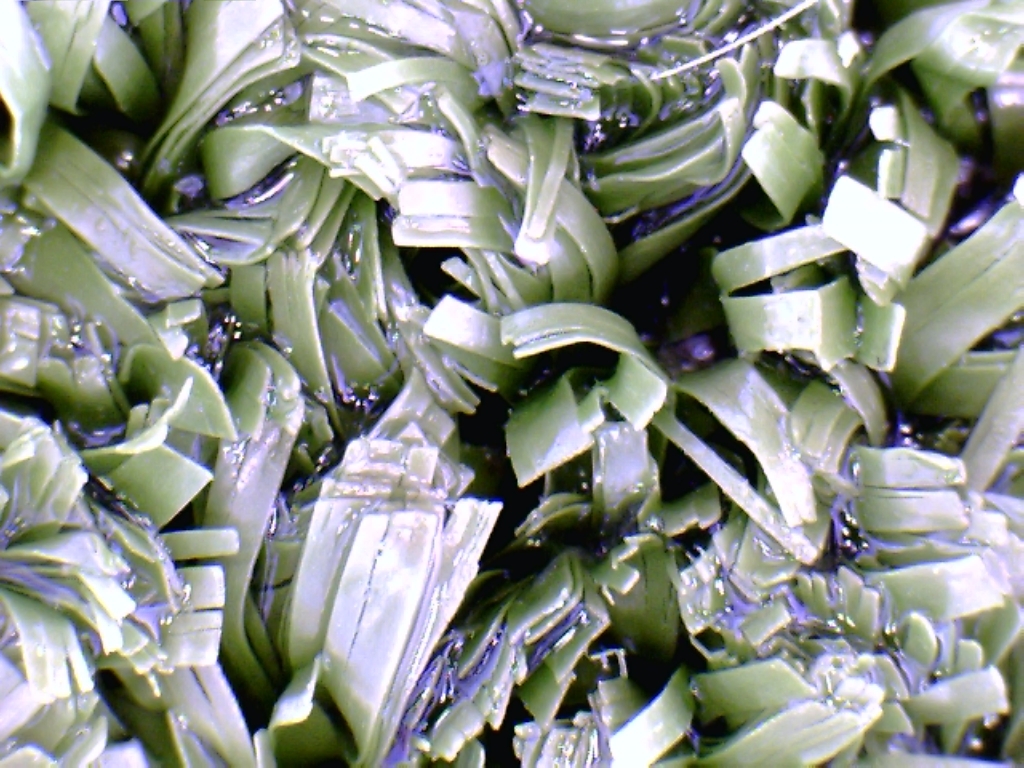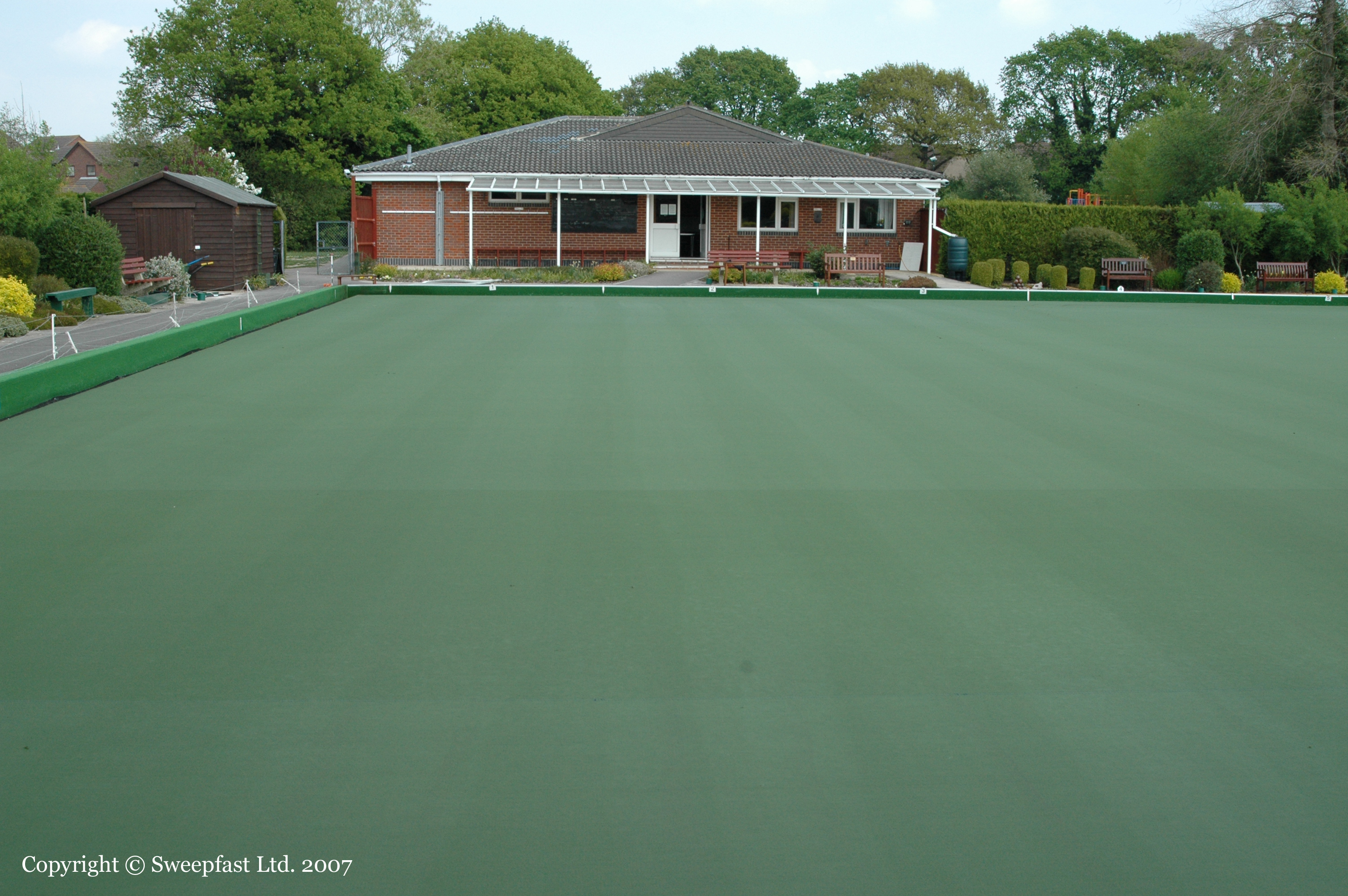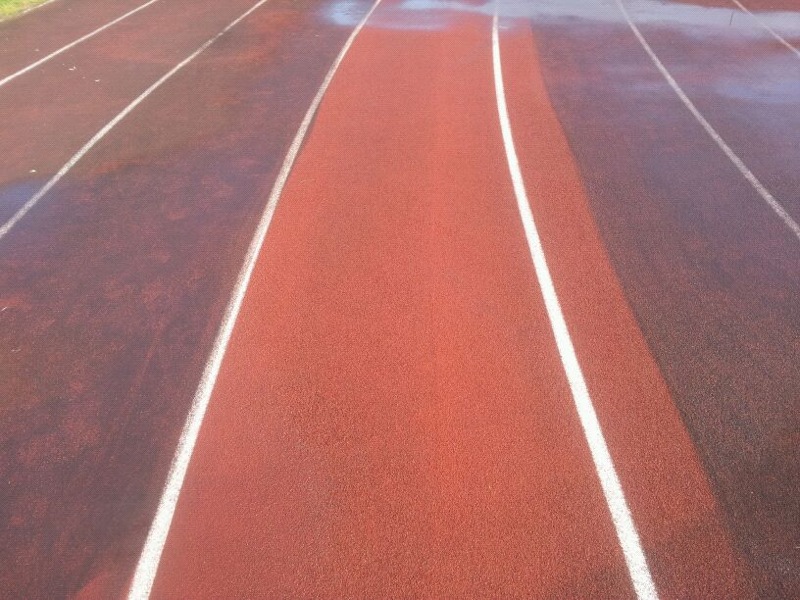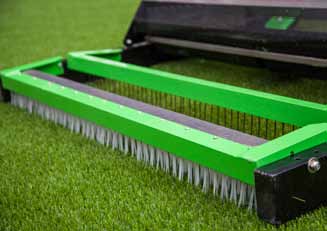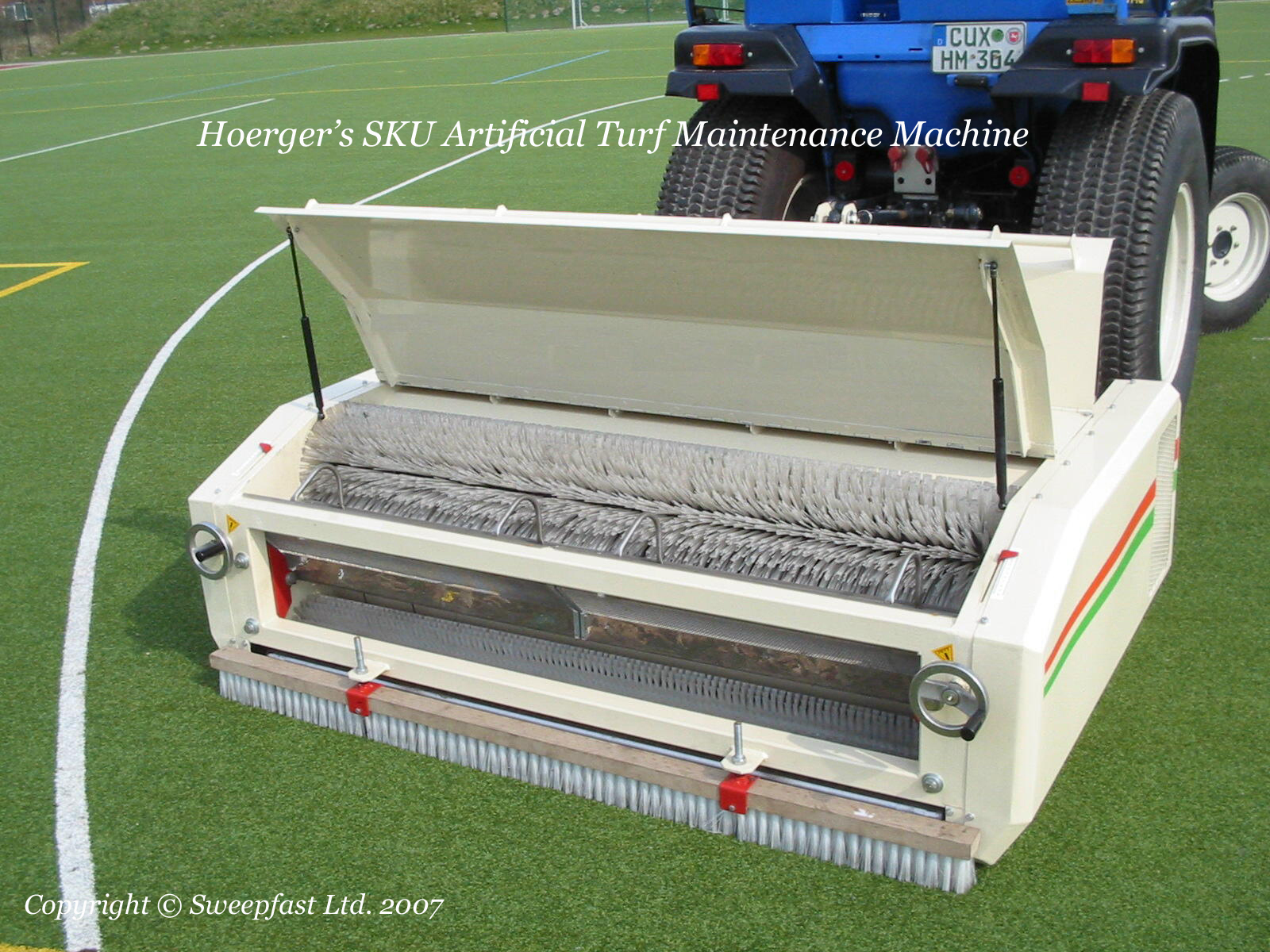With winter fast approaching and the nights getting much cooler, forward planning for ice prevention becomes more important. The loss of a pitch due to freezing over, and the lost revenue that represents is a real issue and economical solutions to this sometimes prolonged issue have to be given some thought. Some schools of thought advise that when a synthetic pitch is frozen over you should leave well alone, as the cold weather can possibly make the fibres more brittle and more susceptible to wear. Then there’s the issue of injuries incurred by players slipping over on a frozen pitch, and we all have a duty of care to other users of a facility.
However in many cases prevention is a better solution rather than trying to de-ice a pitch first, and the tried and tested approach is to apply a fine grade industrial grade pure salt to the surface before the air temperature falls low enough to freeze water. Salt causes freezing point depression, and in effect it lowers the point at which water freezes and means that several degrees of frost can be experienced without any ice forming. Once the temperature gets below -9C then you simply cannot dissolve enough salt into water to prevent freezing, and realistically anything below -6C becomes un preventable.
But there are usually more days in the UK when the temperature is between 0 and -6C than there are -6 and below (famous last words I hear you cry) so you should stand a fighting chance of keeping the facility open by apply salt before the freeze begins. The next point I hear you ask is how much salt do I need? and this is where it gets difficult to give a definitive answer. But basically start with 2 – 3 x 25kg bags per tennis court (500m sq), this should give protection against a mild frost, however how much moisture present on the pitch at the time of application due to rain or snow and is a major factor as the salt will dissolve into the water and possibly drain through the infill material weakening the salt mix. In this situation maybe wait until the rain or snow ceases then brush the pitch to remove as much as possible before applying the salt, or possibly increasing the salt strength, but this then leads to more expense and there has to be a point at which it becomes uneconomical to proceed. Another consideration is is how often to apply salt, and again this is going to be down to the amount of moisture present and how much rain and snow falls diluting the salt, requiring re application.
So basically the answer is yes you can prevent freezing over down to about -6C but at a cost and a single 6,000sq m pitch is going to require about one pallet of Pure Dried Vacum Salt for one application.
Finally how do you apply it? Well the product needs to be applied as economically as possible to prevent wastage, so for smaller areas a walk over spreader is essential to obtain an even distribution of material, for larger areas then maybe a towed spreader suitable for salt application is the way forward. One advantage of this material is that it is free flowing, as opposed to rock salt which should not be used on synthetic grass surfaces, and it can be applied with most types of fine application spreaders.





